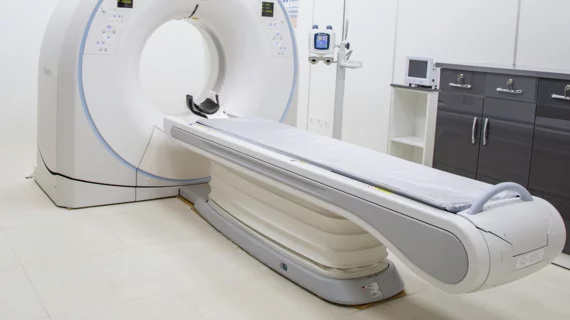IAEA: When selecting medical imaging equipment, don’t assume ‘new’ means ‘low dose’
Advanced imaging equipment using ionizing radiation enters the global market at the rate of one new technology every five years.
That’s been the case since 2010. The most popular categories over the past several years have been photon-counting CT, dual-energy CT, cone-beam CT and digital breast tomosynthesis.
While these and other advances are surely improving lives, they also increase the need for vigilance in balancing clinical needs with radiation protections.
The heads-up comes from a committee of the International Atomic Energy Agency, or IAEA, which last month brought 50 experts representing 21 countries to Vienna for a technical meeting on radiation safety. The team released meeting notes and observations April 22.
The document’s authors point out that medical exposure to radiation from advanced diagnostic and interventional procedures—in short, everything in clinical use except radiation therapy—represents far and away the largest human-made source of radiation exposure at population levels.
Offsetting the potential harms, the group suggests, requires correcting the widely held misperception that newer almost always means lower-dose than ever before.
Or, as the authors put it:
One of the main concerns from the radiation protection of patients’ perspective is the increase of dose to patients from some newer imaging technologies that go against the prevailing impression that all the newer technologies provide less patient dose.
In making this observation, the IAEA experts present their consensus on several points:
- There is greater utilization of CT and cone-beam CT as these advanced imaging techniques are increasingly ordered instead of conventional diagnostic X-ray. “Using CBCT in image-guided radiotherapy ensures more accurate delivery of the radiotherapy treatment,” the group comments, “but it may contribute to increasing the patient dose outside the treated volume.”
- In nuclear medicine, the use of PET/CT and SPECT/CT has increased in the managing of chronic diseases. “In nuclear medicine therapy, there is a lack of uniform protocols for discharging patients after radiopharmaceutical therapy with new radionuclides and a lack of patient dosimetry in this field.”
- Expanding the role of PET/CT imaging in radiotherapy treatment planning may also contribute to increasing the patient doses outside the treated volume in radiotherapy.
- The findings from the IAEA technical meeting indicate that there are remaining challenges, such as:
- missing policies, lack of guidelines, appropriateness criteria and audit programs in the new aspects of radiological imaging practices; and
- lack of human resources in the medical imaging fields, inadequate training and obsolete educational curricula may impact the implementation of radiation protection requirements.
- missing policies, lack of guidelines, appropriateness criteria and audit programs in the new aspects of radiological imaging practices; and
The authors acknowledge that AI tools for reducing or optimizing patient dose are multiplying.
However, IAEA radiation-safety experts have noticed “an increased discrepancy between countries or even within countries pertaining to the implementation of newer imaging technologies and techniques.”
The meeting was chaired by Madan Rehani, PhD, chair of radiation safety and director of global outreach for radiation protection at Massachusetts General Hospital.
Read the full meeting notes here and IAEA’s own coverage of the meeting here.

